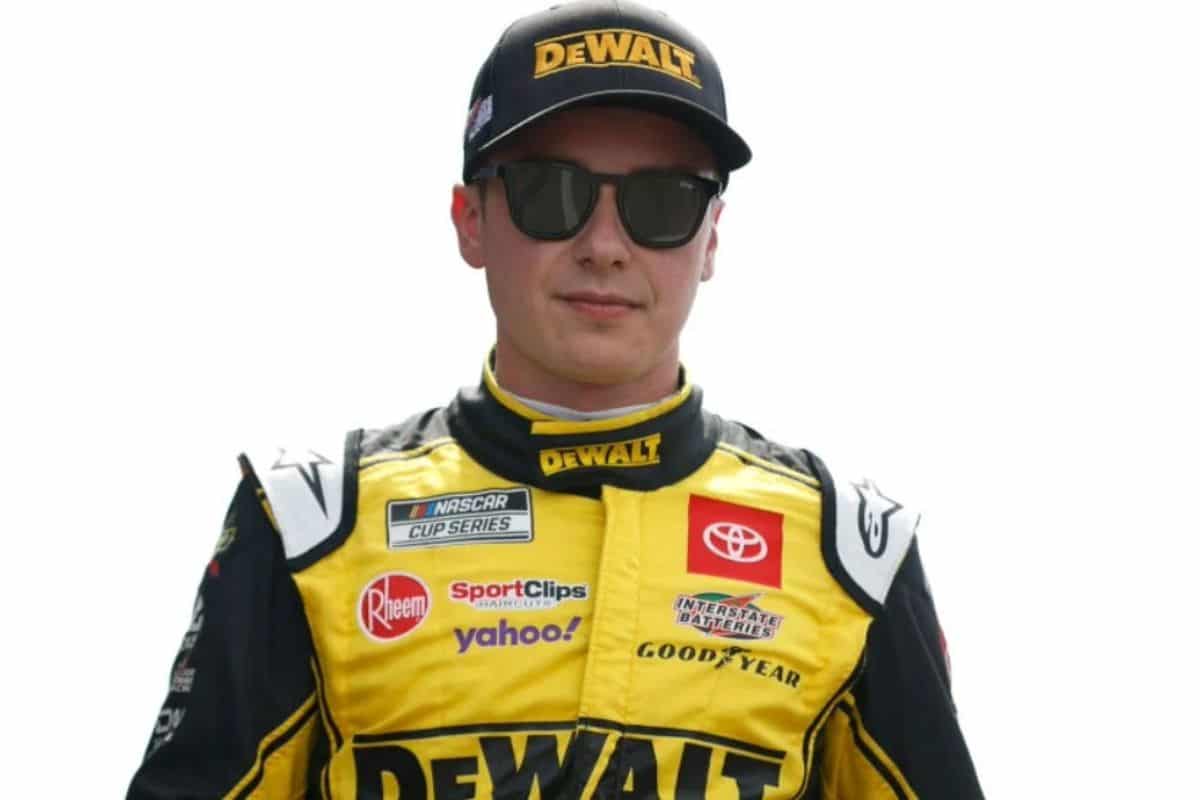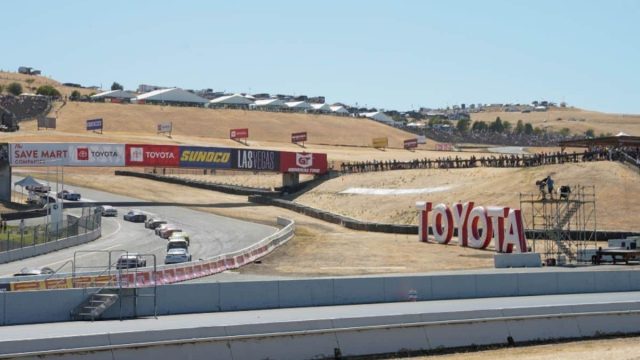Turn 11 Wall Adds Mystery: The recent installment of a concrete wall at Turn 11 of Sonoma Raceway introduces a new layer of complexity to Sunday’s Cup race, sparking both intrigue and apprehension among drivers and fans alike. This modification challenges the maneuverability and safety protocols for the competitors and promises to reshape race strategies and passing maneuvers. As teams adapt to this uncharted territory, the wall’s true influence on race dynamics remains to be seen. Will it become a pivotal factor in determining the race outcome, or merely add to the unpredictability that defines NASCAR?
Key Highlights
- The new Turn 11 wall drastically reduces the margin for error, increasing the risk of significant incidents.
- Drivers must adapt to the wall’s sharp edges and segmented design, impacting their strategies and race performance.
- The concrete wall alters passing opportunities and heightens the importance of precision at Turn 11.
- Safety concerns among drivers due to the wall’s temporary nature and jagged design add uncertainty to the race.
- The repaved surface and new wall together promise a thrilling and unpredictable race at Sonoma Raceway.
New Boundary
The introduction of a new concrete wall boundary at Turn 11 of the Sonoma Raceway adds a significant and potentially race-altering variable to this weekend’s NASCAR Cup Series Toyota / Save Mart 350.
Historically, Turn 11 has been defined by tire packs, which have provided a degree of flexibility for drivers maneuvering this critical hairpin. These tire packs, a fixture seemingly since the inception of the track, have been replaced by a ‘permanent’ concrete wall, a change that TobyChristie.com revealed on Friday.
This modification fundamentally alters the approach and strategy drivers will need to employ. The tire packs, while offering a level of cushion, also allowed for minor errors without catastrophic consequences. By contrast, the concrete wall introduces a more rigid, unforgiving boundary. The margin for error is drastically reduced, increasing the potential for significant incidents that could reshape race outcomes.

The implications of this change are wide-ranging. Drivers accustomed to exploiting the tire packs’ forgiving nature will now need to recalibrate their techniques, potentially leading to more conservative approaches as they negotiate Turn 11.
Additionally, the new boundary is likely to impact race dynamics, particularly in overtaking maneuvers. The hairpin has always been a hotspot for aggressive passes, and the presence of the concrete wall may deter some of the more audacious moves, thereby affecting race strategy and excitement.
Driver Reactions and Concerns
Drivers wasted no time in expressing their apprehensions about the newly installed concrete wall at Turn 11, citing significant concerns about visibility and maneuverability that could dramatically influence Sunday’s race. The consensus among the drivers after walking the track on Friday was unanimous: the new wall has transformed the hairpin Turn 11 into a completely blind turn. This has prompted a wave of concerns, especially from seasoned drivers like Denny Hamlin and William Byron, who emphasized the critical visibility issues and the increased reliance on spotters.
Denny Hamlin mentioned, ‘With the wall in place, Turn 11 is now a guessing game. We’re going to be heavily dependent on our spotters to guide us through safely.’ William Byron echoed these sentiments, underlining the potential for miscommunication and the added pressure on spotters to navigate this blind spot.
“It’s a little bit blind, but you’re kind of getting used to it and understanding the radius of how far I’ve got to turn the wheel to make the corner without hitting it,” Denny Hamlin explained. “I think there will definitely be a few that cut it too tight, and risk knocking a toe link out, but hopefully it’s not us.”
“It’ll definitely make it hard to see around that corner,” Byron explained. “Like, if somebody spun out in that corner, you’re going to have to really rely on your spotter because I feel like you won’t be able to see ahead of you as much as before.”
Christopher Bell brought another dimension to the discussion, pointing out the lack of options to avoid crashes.
“I guess it’s going to probably make it a little more congested if there’s a crash,” Christopher Bell said. “You’re not going to have anywhere to go.”
“But other than that, normal racing conditions. I didn’t notice a difference.” -bell
- Visibility Issues: The new wall has turned Turn 11 into a blind corner, making it difficult for drivers to see ahead.
- Spotter Dependence: Drivers will need to rely more heavily on their spotters, increasing the chances of miscommunication.
- Crash Avoidance: The inability to cut inside the rumble strip limits options for avoiding accidents.
- Driver Safety: The changes raise significant safety concerns, potentially leading to more on-track incidents.

Shape and Composition of the Wall
Concerns about the shape and composition of the new Turn 11 wall are mounting, particularly because its jagged design, composed of temporary concrete barriers, could exacerbate vehicle damage during high-intensity racing scenarios. The wall, while intended to be a permanent fixture, has drawn scrutiny from drivers and analysts alike due to its segmented construction.
Alex Bowman, a prominent voice among the critics, has expressed his discontent, citing the jagged nature of the barriers. He has advocated for a more curved design, which he argues would be less likely to cause severe damage to cars upon impact.
“I don’t think we really have to drive it differently, I just think it’s odd the way it was pieced together, right? It’s very jagged,” Bowman explained. “A curved wall would have been nice.”
The current configuration, composed of individual concrete sections, introduces a series of sharp edges that can be particularly unforgiving during a collision. Each segment, while robust, lacks the fluidity that a continuous, curved wall would provide. This segmented construction can lead to abrupt, jarring impacts that are more likely to damage vehicles seriously, potentially affecting the outcomes of races and the safety of the drivers.
“I could see if you get under somebody, it’s going to be really easy for them to force you down into that wall,” Bowman said. “Probably break a toe link pretty easy. Hopefully, we’re not in that situation.”
Moreover, the temporary nature of these barriers raises questions about their resilience and integrity under the stress of competitive racing. Unlike permanent, monolithic walls that are designed to absorb and dissipate impact forces more evenly, these sectional barriers may not provide consistent protection.
Impact on Racing
While the construction of the Turn 11 wall has sparked debate, its actual impact on Sunday’s race at Sonoma Raceway remains a topic of intrigue and speculation. The ARCA Menards Series West successfully raced without incident on Friday afternoon, suggesting that the wall may not present the anticipated challenges. Moreover, the NASCAR Xfinity Series and NASCAR Cup Series held practice sessions with the wall in place, also experiencing no significant issues.
However, the true test will come during the high-stakes competition of Sunday’s race. The wall’s presence in Turn 11 could potentially influence several aspects of racing, including driver strategy and overtaking maneuvers. Christopher Bell’s remarks highlight a broader concern among drivers: the differences brought about by the newly paved surface, which may overshadow the wall’s effect.
- Driver Adaptation: How quickly drivers adapt to the new dynamics presented by the wall in Turn 11 will be vital. Quick reflexes and strategic adjustments could make or break their race.
- Passing Opportunities: The wall may alter traditional passing zones, potentially making overtaking more challenging and changing the flow of the race.
- Race Incidents: While practice sessions were incident-free, the aggressive nature of race day could see the wall becoming a focal point for collisions or near-misses.
- Tire Wear and Management: The new paved surface is an additional variable. Drivers will need to manage tire wear carefully, especially in conjunction with the new Turn 11 configuration.
Outlook
With the newly repaved surface and the introduction of the Turn 11 wall, Sunday’s race at Sonoma Raceway promises to be a thrilling spectacle, as drivers navigate these changes in their quest for victory. The repaving has resulted in ultra-fast laps, setting the stage for a potential new track record during Saturday’s qualifying session. This anticipation adds an extra layer of excitement for fans who are keen to see how these factors will shape the competition.
The smooth, fresh asphalt offers improved grip and speed, but it also presents a unique challenge for teams as they fine-tune their car setups. Engineers and drivers alike must quickly adapt to the nuances of the new surface, balancing speed with tire management. This dynamic is expected to reward those who can swiftly interpret and react to the evolving track conditions, potentially shaking up the usual competitive hierarchy.
The newly erected Turn 11 wall is another variable that will certainly influence race strategies. This tighter, more unforgiving boundary demands precision and composure, especially in high-pressure moments. Drivers who can master the intricacies of Turn 11 will gain a strategic advantage, particularly in overtaking maneuvers and defensive driving. The added risk of misjudging this corner could lead to dramatic moments, further intensifying the race.
As the drivers prepare for the Toyota/Save Mart 350, the outlook is one of high stakes and heightened competition. Fans can expect a blend of speed, strategy, and spectacle, with the potential for surprise outcomes. This race at Sonoma Raceway is poised to be a defining event, testing the adaptability and prowess of NASCAR’s finest.

News in Brief: Turn 11 Wall Adds Mystery
The introduction of the concrete wall at Turn 11 of Sonoma Raceway is poised to greatly influence Sunday’s Cup race. This new boundary presents both challenges and opportunities, impacting driver strategies, passing maneuvers, and safety considerations.
As drivers navigate this unfamiliar obstacle, their adaptability and skill will be rigorously tested, promising a race filled with unpredictability and heightened excitement.
Observers and enthusiasts will keenly anticipate how this alteration reshapes the dynamics of competition.
ALSO READ: Shane Van Gisbergen Tops Xfinity Series Practice at Sonoma
